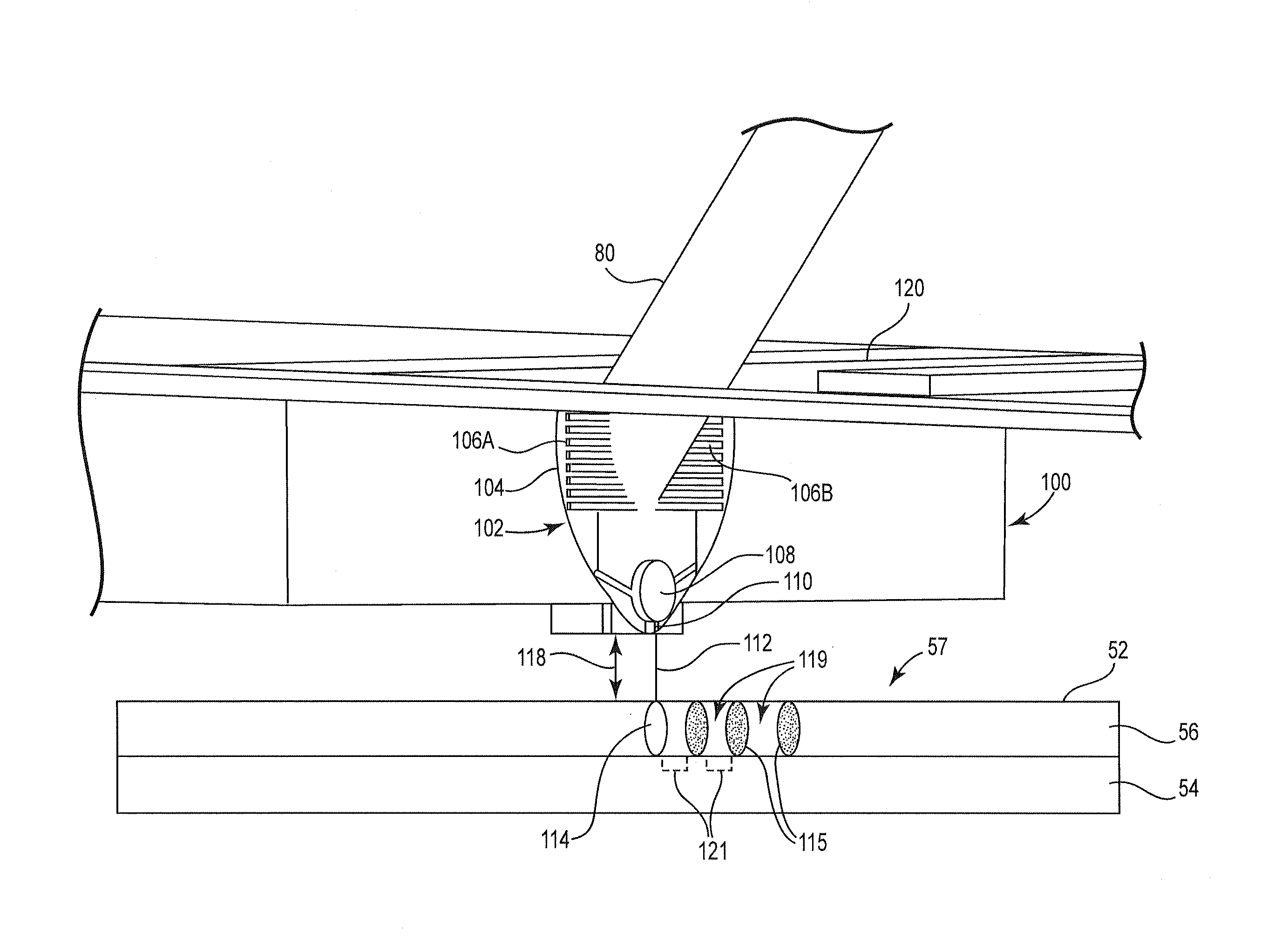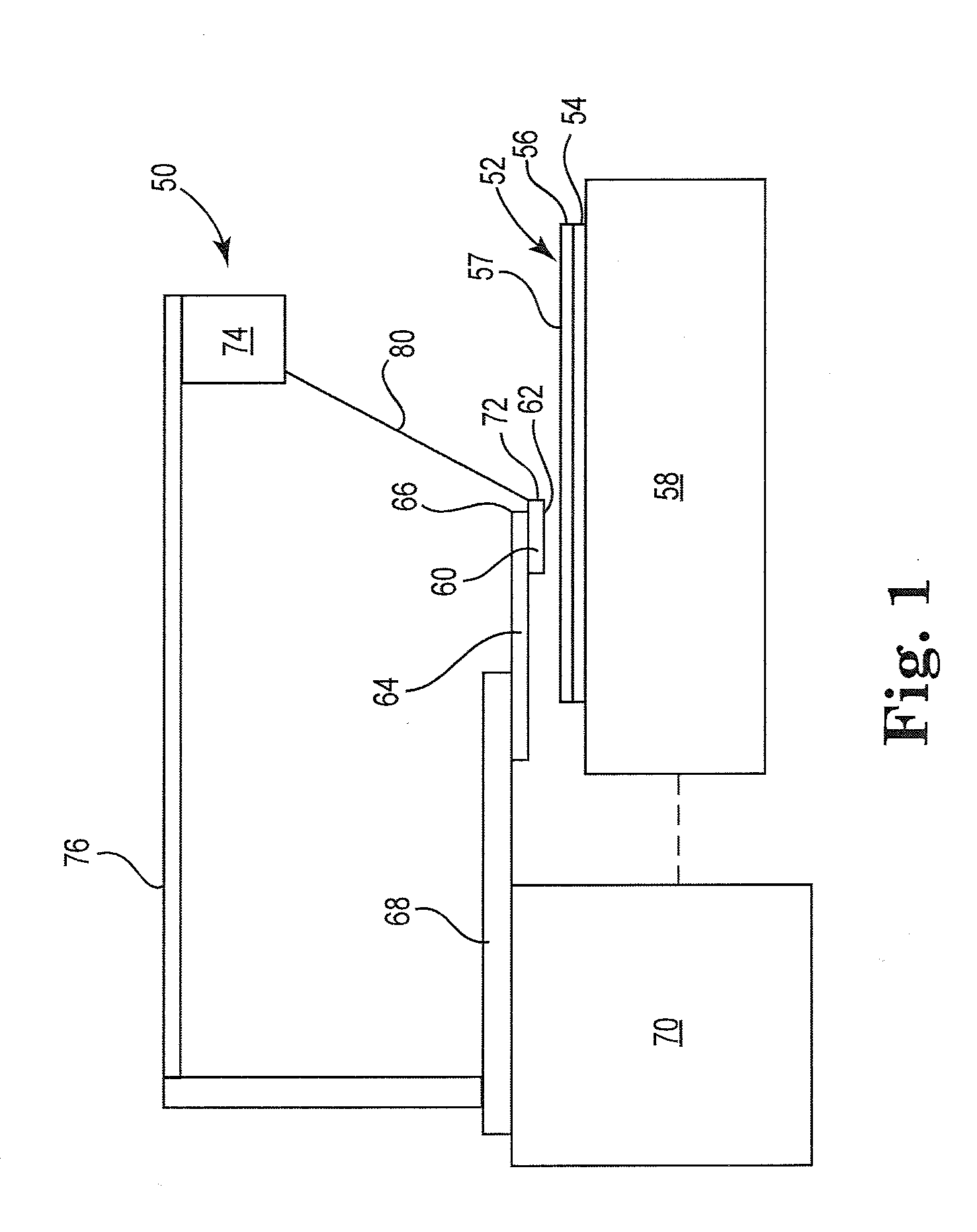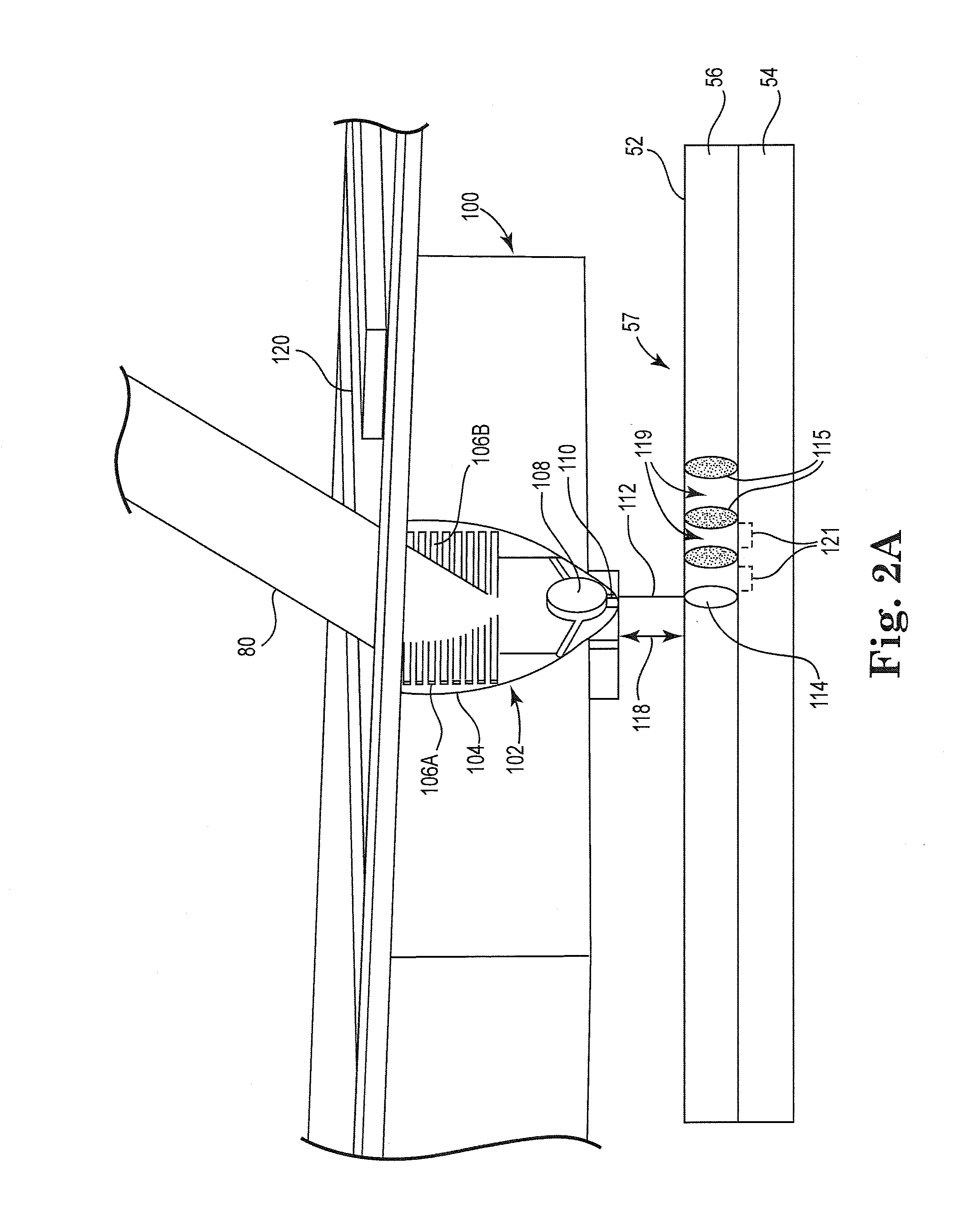Plasmon head with hydrostatic gas bearing for near field photolithography
a technology of hydrostatic gas bearings and plasmon heads, which is applied in the field of plasmonic heads with hydrostatic gas bearings, can solve the problems of increasing the difficulty and complexity of using the established method of optical projection lithography at the short optical wavelength, the use of wavelengths in the deep ultraviolet, the extreme ultraviolet (euv), or the x-ray regime requires increasingly difficult adjustments of the lithographic process, and the final resolution of conventional photolithography is restricted by the diffraction
- Summary
- Abstract
- Description
- Claims
- Application Information
AI Technical Summary
Benefits of technology
Problems solved by technology
Method used
Image
Examples
Embodiment Construction
[0033]The entire content of U.S. Provisional Patent Application Ser. No. 61 / 172,685, filed Apr. 24, 2009, is hereby incorporated by reference.
[0034]FIG. 1 is a schematic illustration of the system 50 for maskless, nano-scale, photolithography in accordance with an embodiment of the present invention. A master 52 including a substrate 54 with photo-resist layer 56 supported on X-Y stage 58. Slider 60 has an air-bearing surface (ABS) 62 that is oriented toward the master 52.
[0035]The slider 60 is mounted on a suspension 64 similar to a conventional suspension like that used in magnetic recording disk drives, with a head gimbal assembly or flexure 66 that permits the slider 60 to “pitch” and “roll” relative to the master 52. The suspension 64 is connected to support arm 68 that is supported by controller 70. The support aim 68 applies a preload to the suspension 64 to maintain the flying ability of the slider 60.
[0036]In one embodiment, the support arm 68 is fixedly mounted on controll...
PUM
| Property | Measurement | Unit |
|---|---|---|
| fly height | aaaaa | aaaaa |
| wavelength | aaaaa | aaaaa |
| frequencies | aaaaa | aaaaa |
Abstract
Description
Claims
Application Information
 Login to View More
Login to View More - R&D
- Intellectual Property
- Life Sciences
- Materials
- Tech Scout
- Unparalleled Data Quality
- Higher Quality Content
- 60% Fewer Hallucinations
Browse by: Latest US Patents, China's latest patents, Technical Efficacy Thesaurus, Application Domain, Technology Topic, Popular Technical Reports.
© 2025 PatSnap. All rights reserved.Legal|Privacy policy|Modern Slavery Act Transparency Statement|Sitemap|About US| Contact US: help@patsnap.com



